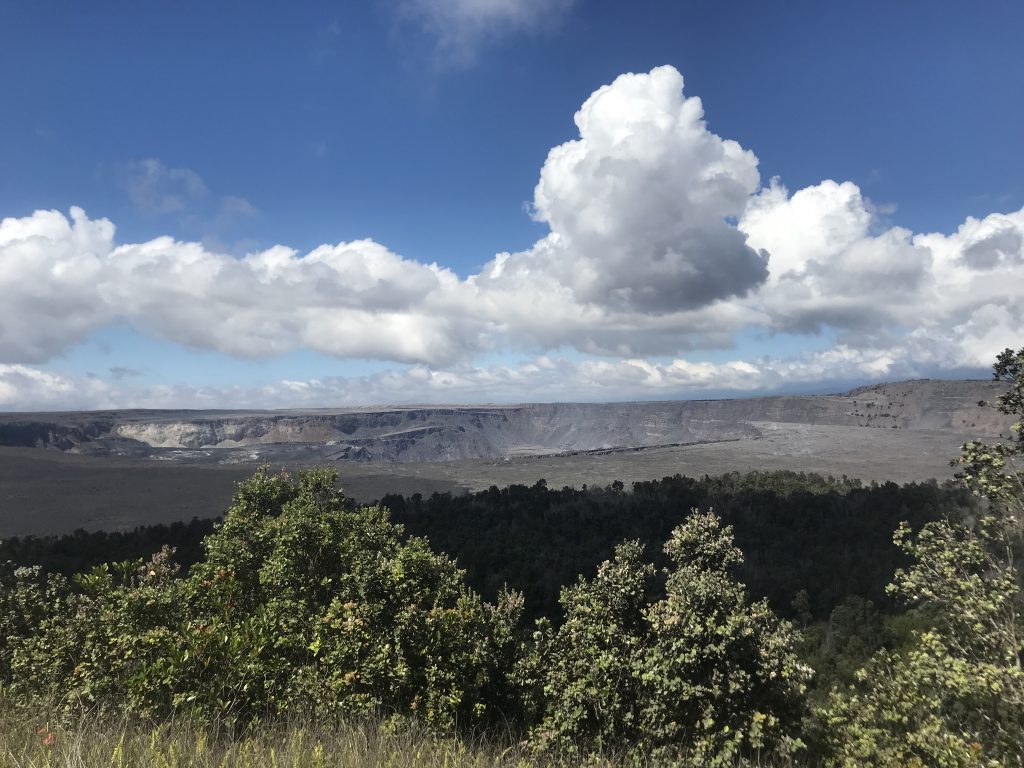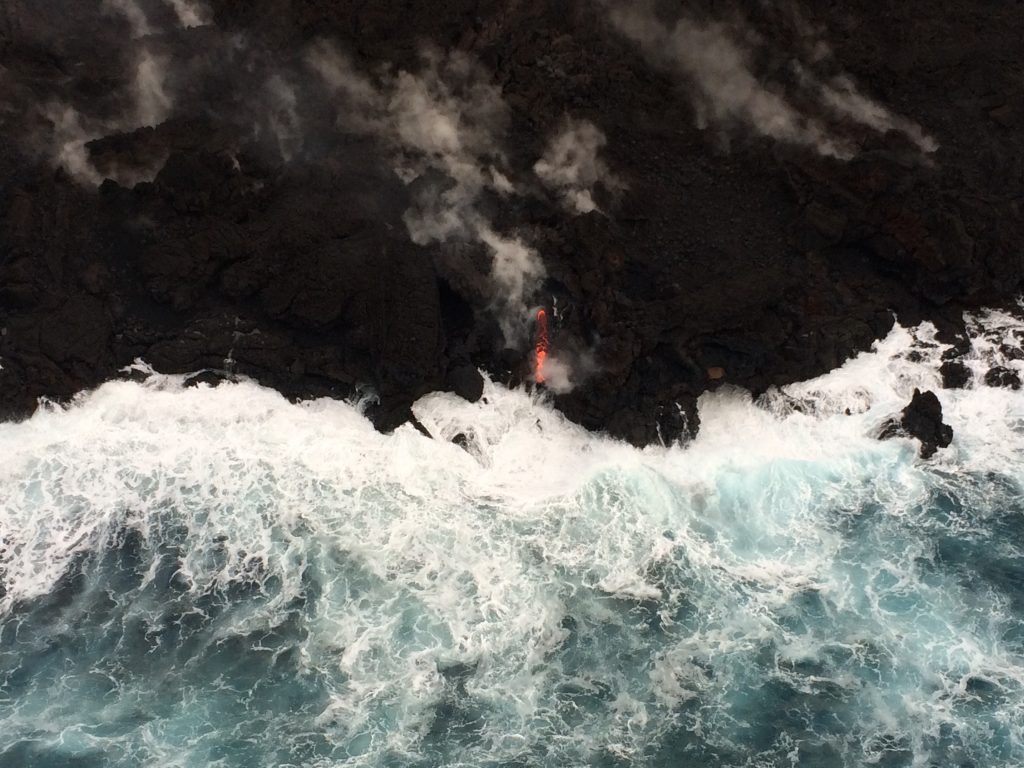PHOTOS, VIDEOS: Lull or End of Kīlauea Activity?
VIDEO: An Unmanned Aircraft Systems overflight of Fissure 8 on Aug. 21, 2018, showed no incandescence within the cinder cone. Minor amounts of gases, primarily steam, rose from the north wall of the cinder cone and from areas along the Lower East Rift Zone. The interior walls of the Fissure 8 cone and lava channel are slumping downward and inward. The cinder cone was about 164 feet high. Note: An overflight of the Fissure 8 vent on Aug. 29 again showed no incandescence within the cone.

Kīlauea Volcano’s summit, seen here from the northeast rim of the caldera, has remained quiet, with no collapse events since Aug. 2, 2018. It remains too soon to tell if this diminished activity represents a temporary lull or the end of summit collapses. HVO continues to record detailed visual observations and monitor seismic, deformation, and gas data for any indications of possible renewed activity. PC: USGS HVO
According the Aug. 29, 2018, USGS Hawaiian Volcano Observatory status report on Kīlauea Volcano and the Lower East Rift Zone, seismic and volcanic activity have diminished greatly. No incandescence was visible in the Fissure 8 cone, nor was there any lava entering the ocean during an early morning overflight.
Seismicity remains low and ground deformation is negligible at the summit of Kīlauea.
Earthquakes, probably aftershocks of the magnitude-6.9 earthquake in early May, continue on south flank faults.
On the volcano’s Lower East Rift Zone (LERZ), no incandescence was visible in the Fissure 8 cone; no lava was entering the ocean.

Southward facing aerial view of the Fissure 8 cone. The two small areas of incandescence, gas jetting and spatter from a previous photograph appeared crusted over on Aug. 21, 2018. PC: USGS HVO
Sulfur dioxide emission rates at both the summit and LERZ are drastically reduced; the combined rate is lower than at any time since late 2007.
On Aug. 21, SO2 emissions from the LERZ were too low to measure, although the smell of SO2 smells was noticeable.
HVO crews are working to restore communication with several monitoring stations on the east side of the island that was disrupted by the passage of Hurricane/Tropical Storm Lane, but the losses do not significantly reduce their ability to assess volcanic conditions.

Only one small ocean entry near Ahalanui was visible during the Aug. 27, 2018, overflight. PC: USGS HVO
Whiteout conditions could occur on the new lava field due due to steam produced by heavy rainfall on still-hot lava flows.
The Hawaiian Volcano Observatory will continue to closely monitor Kīlauea’s seismicity, deformation and gas emissions for any sign of reactivation and maintain visual surveillance of the summit and the LERZ as best as they are able. Ground and drone crews were in the field on Aug. 29 but continue to be hampered by weather conditions.
It remains too soon to tell if this diminished activity represents a temporary lull or the end of summit collapses.
VIDEO: Changes at the summit of Kīlauea between April 14 and Aug. 20, 2018, were captured by a USGS–Hawaiian Volcano Observatory camera. This time-lapse series includes roughly one image per day. The lava lake within Halema‘uma‘u is visible in April, with overflows onto the caldera floor on April 23. The lava lake drains in early May, followed by explosive activity over the next few weeks. Large-scale subsidence of Halema‘uma‘u and the adjacent caldera floor begins at the end of May and ends abruptly on Aug. 2. Summit seismicity and ground deformation are negligible through Aug. 20, 2018. The crater within the caldera is now seven times larger than it was before the onset of subsidence. VC: USGS HVO












